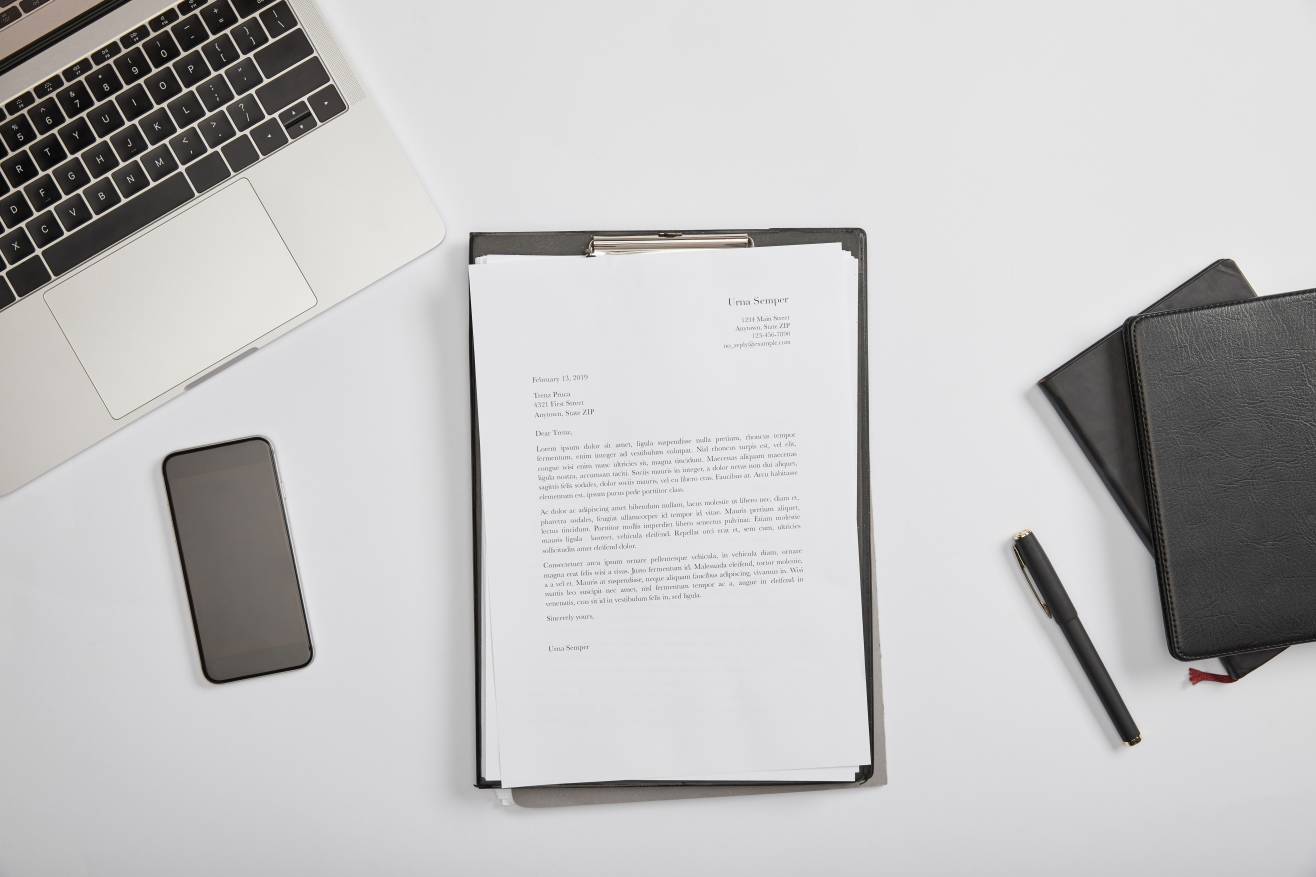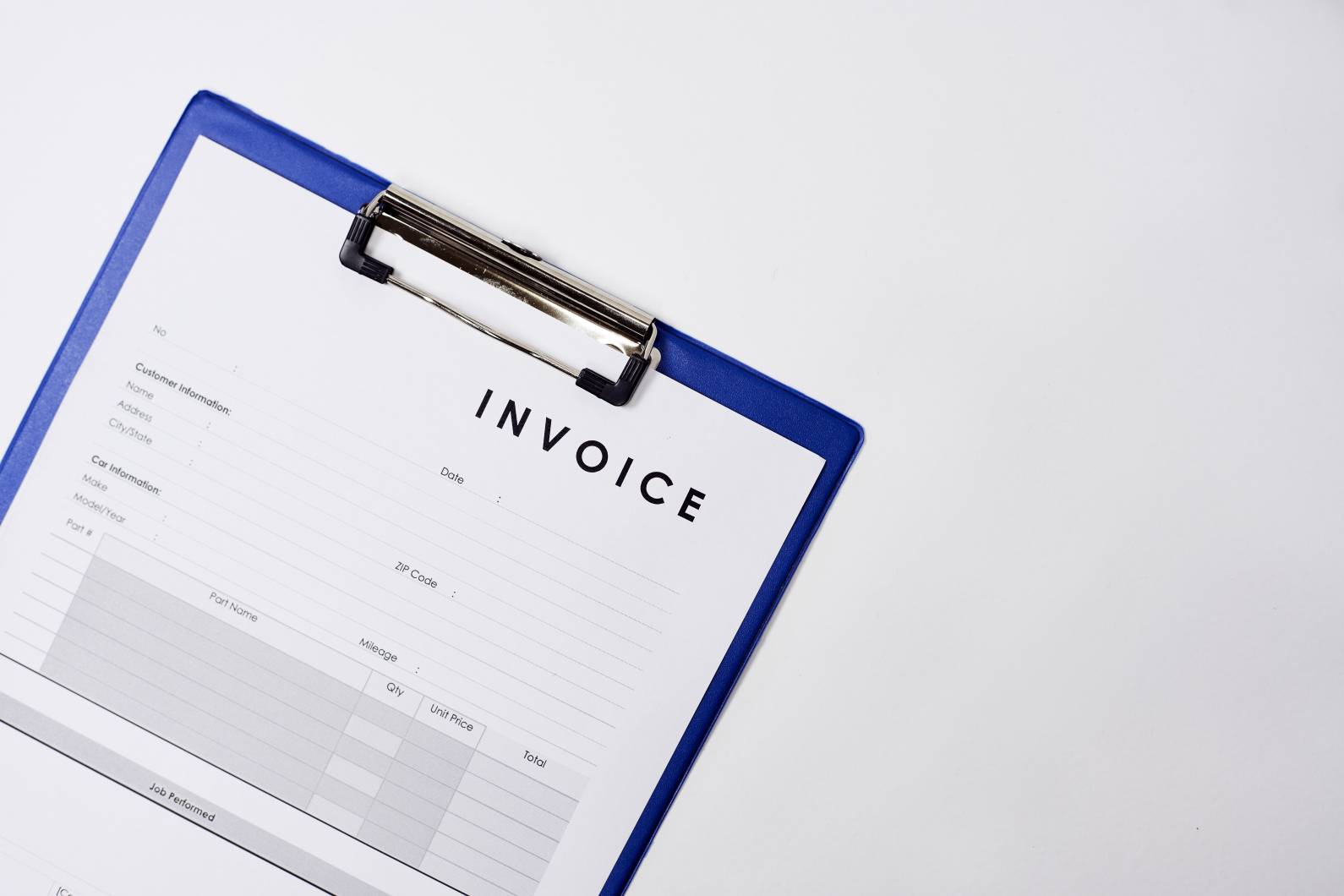Letter of Credit Example: Real-World Applications in Global Business

Late payments and broken deals are common problems in global trade. That’s where a Letter of Credit (LC) steps in. It protects both buyers and sellers by making sure goods are shipped and payments are made.
This post breaks down how LCs work, where they’re used, and shows real examples. You’ll also see what a Letter of Credit looks like so you can better understand how it works.
What Is a Letter of Credit?
Basic Definition and Purpose
A Letter of Credit is a written promise from a bank. It says the seller will get paid once they meet the terms listed in the LC. This includes shipping the right goods and providing the correct documents.
It removes the need for the buyer and seller to fully trust each other. The bank steps in as a reliable middleman. If the seller does their part, the bank will pay them—no matter what happens with the buyer.
This system is widely used in global business because it reduces risk on both sides. It helps smaller companies trade with large corporations. It also supports trade across borders, even when buyers and sellers operate under different laws and currencies.
LCs also prevent delays in payment. Instead of waiting for the buyer to manually release funds, payment is triggered automatically when conditions are met.
Types of Letters of Credit
There are several types of LCs, each designed for different kinds of deals and levels of risk. Knowing the differences helps businesses choose the right one.
A revocable LC can be changed or canceled by the issuing bank or buyer at any point before payment. The seller might not even be informed of the change. Because of this, it is rarely used in serious business deals.
An irrevocable LC cannot be changed unless everyone involved agrees. This gives the seller strong protection. Most international transactions use this type.
A confirmed LC adds another bank—often in the seller’s country—that promises to pay if the original bank fails. This helps when the seller doubts the reliability of the issuing bank or the buyer’s country has an unstable economy.
An unconfirmed LC doesn’t involve a second bank. The seller depends only on the buyer’s bank. This might work in low-risk situations or when both parties have a long history of doing business together.
A standby LC acts as a backup guarantee. It isn’t meant to be used in normal deals. It’s activated only if the buyer doesn’t pay or fails to perform. This makes it common in service contracts, rentals, and construction deals.
A transferable LC allows the seller to pass the payment rights to another party, like a supplier. This is helpful when the seller is a middleman or trader who doesn't make the goods themselves.
A revolving LC is used for repeat orders. It lets the buyer and seller avoid creating a new LC every time. The limit renews automatically after a certain time or when used up.
A back-to-back LC is helpful in triangle trade. One LC is used to support another. A seller can use the buyer’s LC to open a second LC with a supplier.

Common Situations Where LCs Are Used
International Trade Between New Partners
Companies often feel unsure when working with a new partner overseas. They may not know if the other side will keep their promises. Language barriers and different business customs make it harder.
A Letter of Credit reduces that doubt. The buyer doesn’t have to pay until the seller ships the goods and provides proof. The seller doesn’t ship anything until they know the money is guaranteed by a bank.
This gives both parties a strong reason to follow the deal. It allows trade to happen even without a long relationship or in-person meetings.
This is especially useful for online international B2B platforms where companies connect for the first time. An LC builds instant credibility.
Trade with High-Risk Regions
Some countries face war, sanctions, political unrest, or economic crises. These risks scare off buyers and sellers.
Using a Letter of Credit allows businesses to trade even in these regions. It protects against the failure of local banks or government interference.
In these cases, sellers often ask for a confirmed LC. This means a bank in their own country steps in to back the deal, making it safer for them.
Importers working in these regions also benefit. They can show their suppliers that payment is backed by a reliable international bank, not just a struggling local institution.
Projects with Long Production or Delivery Times
Some products take months to manufacture and ship. Delays in materials, factory problems, or transport issues can stretch the timeline.
During this long wait, trust may start to fade. One side might worry that the other will walk away.
A Letter of Credit helps keep both parties on track. The seller knows they’ll get paid after completing their part. The buyer can relax, knowing the seller won’t get paid unless they do the job right.
This is often used for things like custom-made equipment, bulk chemicals, or large construction materials.
Trade Involving Expensive or Custom Goods
When the value of a shipment is high, the risk goes up. The buyer wants to make sure the goods are exactly what they ordered. The seller wants to make sure the money is really there.
An LC protects both sides. The bank reviews the documents and confirms that everything matches the agreed terms.
Custom goods often can’t be returned or resold easily. An LC makes sure the buyer gets what they asked for and the seller gets paid.
First-Time International Deals
Businesses trying global trade for the first time often feel unsure. They may not understand how international payment works or how to handle foreign paperwork.
A Letter of Credit creates a clear structure. It shows exactly what documents are needed and when payment will happen. This gives small companies a way to join global trade safely.

Letter of Credit Example: Real-World Case Studies
Example 1 – Importing Electronics from Asia to Europe
A UK company orders $250,000 worth of computer parts from a supplier in South Korea. Both sides agree to use an irrevocable Letter of Credit.
The buyer's bank issues the LC and sends it to the seller's bank. The seller ships the goods, provides the required documents, and gets paid within days.
The seller feels secure knowing the money is backed by a major bank. The buyer gets peace of mind that the seller can’t collect payment without proof of shipment.
Example 2 – Exporting Machinery to the Middle East
A German firm sells heavy equipment to a buyer in Saudi Arabia. The deal includes a confirmed LC.
The issuing bank is based in Riyadh. The confirming bank is in Frankfurt. After the machinery ships, the seller submits all required documents.
Their local bank checks the documents, approves them, and pays the seller. The local bank later collects payment from the bank in Riyadh.
Example 3 – Agricultural Trade Between Africa and the Netherlands
A farm co-op in Kenya agrees to sell coffee beans to a Dutch buyer. The seller asks for a standby LC as added security.
The buyer promises to pay within 30 days of delivery. If they don’t, the seller can claim payment through the standby LC.
This lets small farmers trade with large international buyers, knowing they won’t lose money if the buyer defaults.
Sample Letter of Credit Layout
What an LC Issued by a Bank Looks Like
Banks usually issue Letters of Credit using standard templates that follow global trade practices. The format includes very specific details. These details must be filled out properly to avoid confusion, delays, or rejected payments.
Every word matters. If one document doesn’t match the LC wording exactly, payment could be refused or delayed. That’s why most sellers work closely with trade finance advisors or banks to review the LC before shipment.
Here’s what a typical LC looks like:
Credit Number: LC123456
Date of Issue: 10 April 2025
Issuing Bank: Global Trust Bank, New York, USA
Applicant: GreenGrow Imports Ltd., London, UK
Beneficiary: SunHarvest Exports, Nairobi, Kenya
Currency & Amount: USD 75,000
Expiry Date: 10 July 2025
Place of Expiry: Nairobi, Kenya
Payment Terms: Payable at sight upon presentation of required documents
Required Documents:
1. Commercial Invoice (3 copies)
2. Bill of Lading (full set, marked “Freight Prepaid”)
3. Packing List
4. Certificate of Origin
5. Insurance Certificate covering 110% of invoice value
Latest Shipment Date: 20 June 2025
Port of Loading: Mombasa, Kenya
Port of Discharge: Felixstowe, UK
Explanation of Each Section
Credit Number & Issue Date
Used to track and identify the transaction. Each LC has a unique number to avoid confusion.
Applicant & Beneficiary
The applicant is the buyer requesting the LC. The beneficiary is the seller who will receive the money after meeting the terms.
Currency & Amount
This shows how much money is being guaranteed. The seller cannot claim more than this amount.
Expiry Date & Place
This is the final date and place where the seller must present documents. Missing the deadline means no payment.
Payment Terms
"Payable at sight" means payment is made as soon as documents are checked and approved. Other terms could include deferred payment (e.g., 30 or 60 days after shipment).
Required Documents
These must match the terms of the LC exactly. Even small differences (like incorrect wording or missing copies) can lead to delays or rejections.
Latest Shipment Date
This tells the seller when they must ship the goods. If they ship late, the LC may expire.
Port of Loading & Discharge
These show where goods leave and arrive. The banks use this to verify that the shipment followed the agreed route.

Key Documents Required in a Letter of Credit Transaction
-
Bill of Lading
This is a receipt from the shipping company. It confirms the goods were picked up and are on their way. It lists the shipper, receiver, ports, and shipping details.
If it’s a “negotiable” bill of lading, it can be used to transfer ownership of the goods. Banks usually require an original set.
-
Commercial Invoice
The invoice is created by the seller. It lists each item sold, the price, and the total amount due. The buyer uses it for customs, while the bank uses it to check if the goods match the deal.
The details must match exactly what’s in the LC. If the LC says “10 metric tons of cocoa beans” and the invoice says “10,000 kg,” the bank might refuse payment.
-
Packing List
The packing list gives more detail about the goods. It shows how the shipment is arranged—how many boxes, how much each weighs, and what's inside each container.
It helps with customs checks and confirms that the shipment matches the invoice. It's also used to track if anything goes missing during shipping.
-
Insurance Certificate
This document proves that the goods are insured. Most LCs ask for insurance covering more than the value of the goods—usually 110%.
The certificate should name the buyer as the person to be paid if the goods are damaged or lost. It must also mention what risks are covered, such as theft or fire.
-
Certificate of Origin
This shows where the goods were made. Some countries require it to apply the correct taxes or tariffs.
It usually comes from the local chamber of commerce or another certified body. It must match what’s stated in the LC.
-
Inspection Certificate
Some LCs also require a certificate showing the goods were inspected before shipment. This might be done by a third party or a government body.
It proves the goods meet the quality and quantity agreed in the contract. It’s common when the buyer wants extra security, like with food or medical products.
Challenges and Common Mistakes
-
Missing or Incorrect Documents
One of the biggest reasons sellers don’t get paid is paperwork mistakes. Even small errors—like typos, missing signatures, or wrong numbers—can lead to rejection.
Some sellers don’t realize how strict banks are. A document may look fine, but if it doesn’t match the LC word for word, the bank can refuse payment.
Always triple-check every line before submitting documents.
-
Misreading LC Terms
It’s easy to misunderstand what the LC actually says. Some sellers think they just need to ship the goods, but the LC may also require special conditions—like sending documents in a certain order or using specific shipping lines.
If a seller signs the contract without reading the LC first, they may agree to terms they can’t meet.
Having an experienced trade finance officer review the LC can avoid costly mistakes.
-
Delays in Shipment or Document Handling
Shipping delays happen all the time. If the goods ship late and miss the “latest shipment date,” the LC may become invalid.
Even if the goods arrive safely, the seller won’t be paid unless the documents are handed over on time. Working with reliable freight companies and document couriers helps avoid these risks.
Tips for Businesses Using Letters of Credit
1. Use Experienced Trade Advisors
Banks have trade finance specialists who handle LCs daily. Ask them to explain the terms before signing the deal.
If you’re new to international trade, hire an export consultant or freight forwarder with LC experience.
2. Review the LC Immediately
Check the LC line by line when you receive it. Make sure it matches the contract and your ability to ship and document everything on time.
If something looks wrong or unclear, ask the bank to fix it. Don’t assume errors will be ignored.
3. Understand Document Timelines
Some LCs give a short time to present documents—usually 21 days after shipment. Track your shipping dates and make sure you submit them on time.
Late submission is a common reason for non-payment.
4. Communicate With All Parties Early
Stay in touch with the freight company, inspection agency, insurance provider, and your bank. Make sure everyone knows what’s expected and when.
Even one delay in documentation can throw off the whole deal.
5. Avoid Unclear Language in the LC
Keep LC wording simple and direct. Don’t include conditions that are hard to prove with documents. Every requirement must be backed up by paperwork.
The more specific and clear the terms, the lower the risk of problems later.
Understanding the Power of Trade Through a Letter of Credit
A letter of credit (LC) is a financial instrument issued by a bank that guarantees a seller will receive payment from a buyer, provided that the seller meets specific terms and conditions outlined in the LC. This mechanism is widely used in international trade to mitigate risks associated with cross-border transactions, such as differing laws, currencies, and levels of trust between parties. By involving a reliable financial intermediary, LCs ensure that sellers receive timely payment upon fulfilling contractual obligations, thereby facilitating smoother and more secure global trade operations.
Various types of letters of credit cater to different business needs and risk levels. For instance, an irrevocable LC cannot be altered without the consent of all parties, providing strong assurance to sellers, while a confirmed LC adds an extra layer of security by involving a second bank that guarantees payment if the issuing bank defaults. Standby LCs serve as a safety net, activated only if the buyer fails to fulfill payment obligations, making them common in service contracts and construction projects. Real-world applications of LCs span diverse industries and scenarios, from importing electronics between Asia and Europe to exporting machinery to the Middle East, demonstrating their versatility and importance in facilitating complex international transactions.
At Suisse Bank, we help entrepreneurs go global with confidence by offering secure, efficient trade finance solutions—including Letters of Credit. Whether you’re exporting goods for the first time or scaling into new markets, we make it easier to close deals and get paid safely.
Become our client today to make the most of your digital banking experience. We'll help you access trade finance tools like Letters of Credit, performance bonds, and more—so you can trade worldwide without taking on unnecessary risk.

